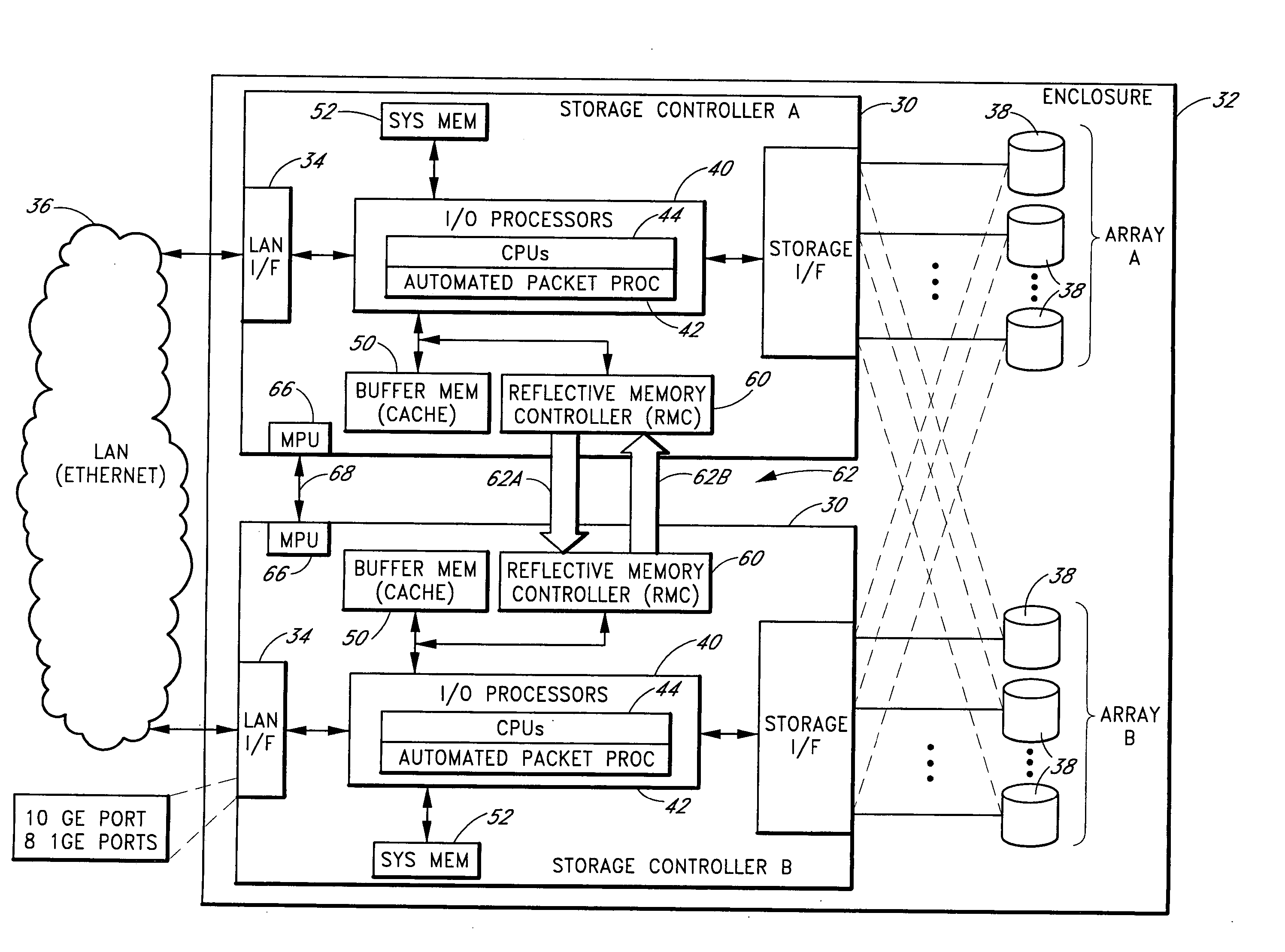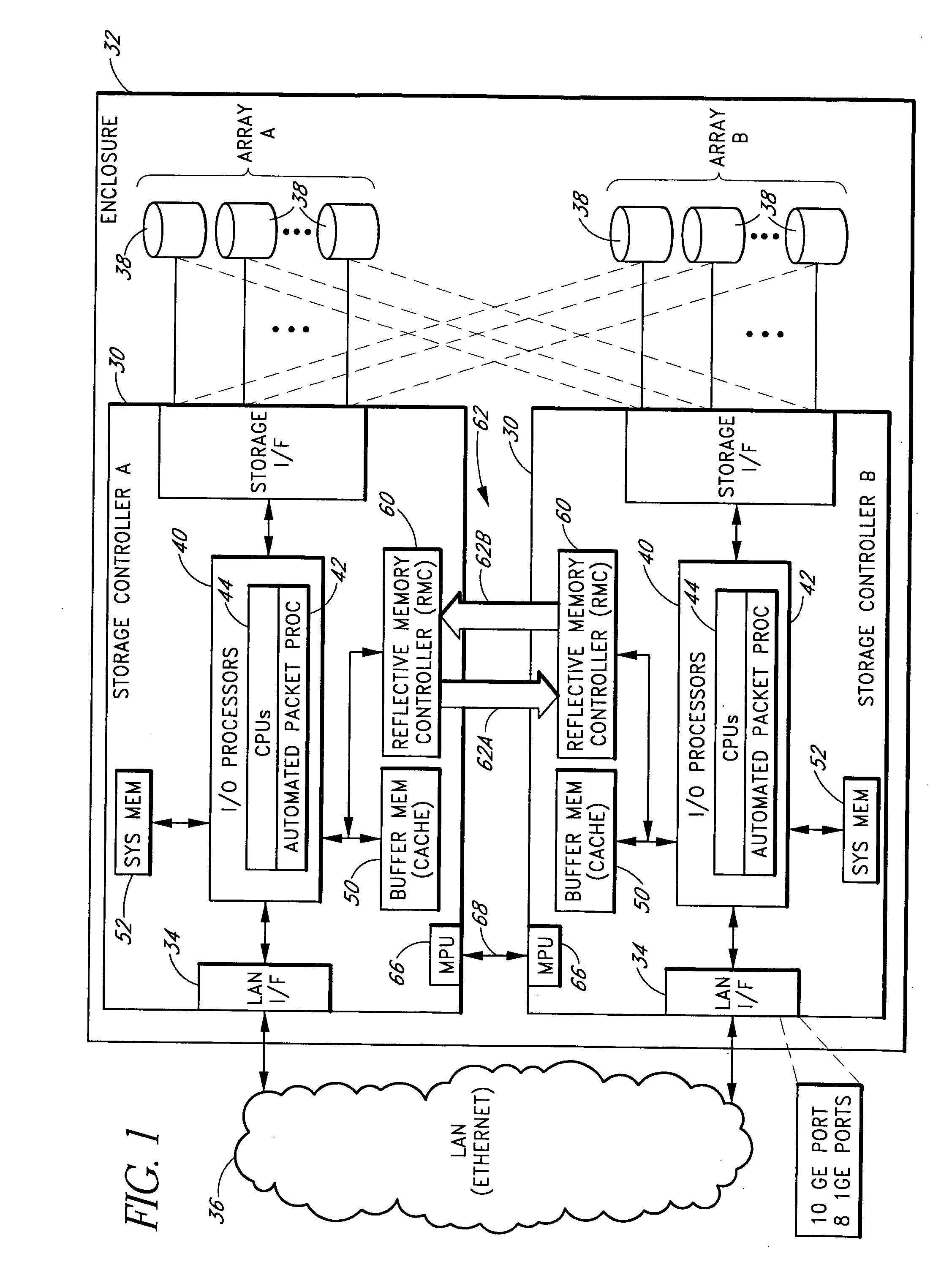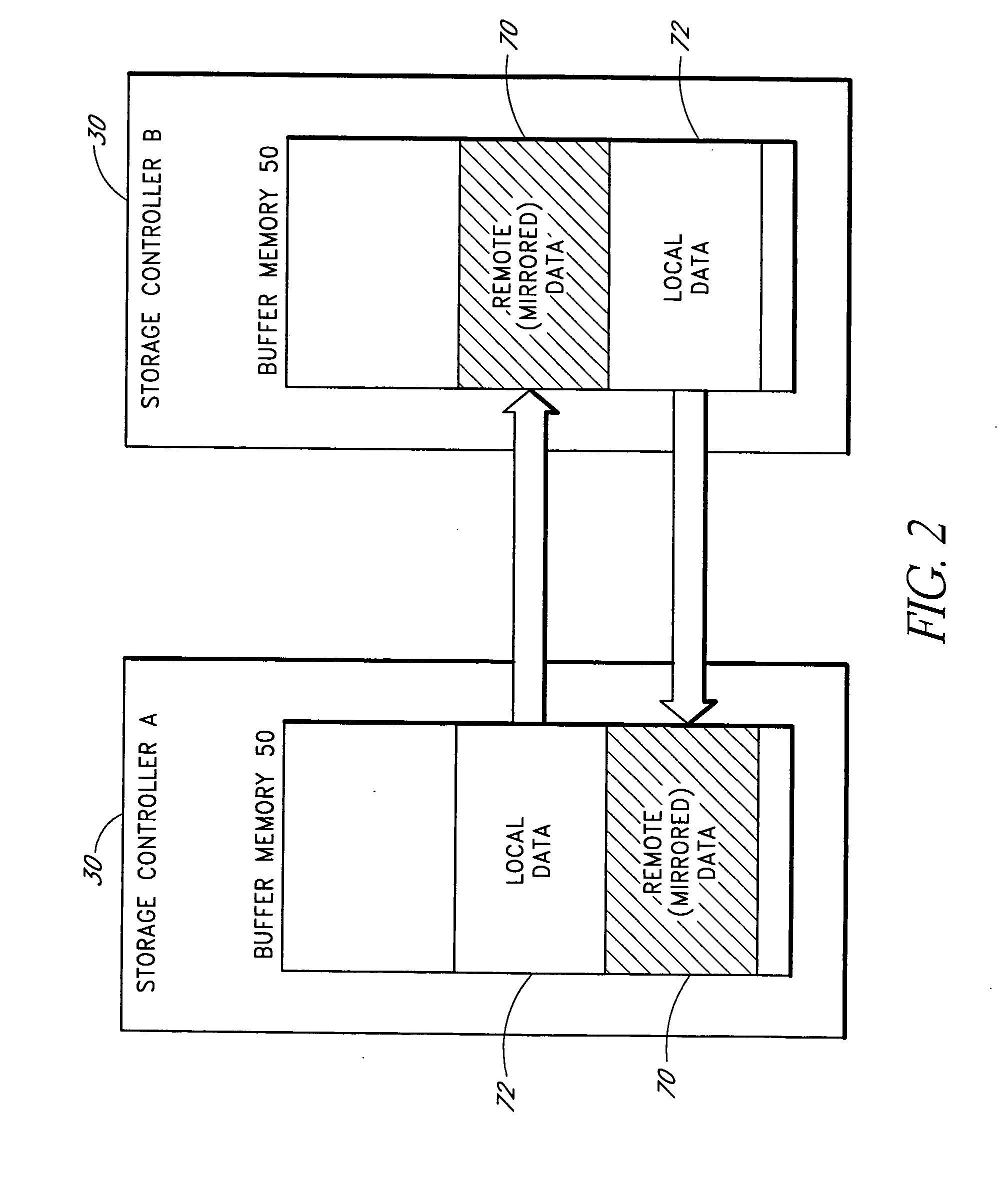Storage controller redundancy using bi-directional reflective memory channel
a storage controller and reflective technology, applied in data switching networks, fault response, instruments, etc., can solve the problems of limiting the rate at which the storage controller can process network traffic, adversely affecting or limiting the performance of the storage system, and all of the system's disk drives cannot be accessed
- Summary
- Abstract
- Description
- Claims
- Application Information
AI Technical Summary
Benefits of technology
Problems solved by technology
Method used
Image
Examples
Embodiment Construction
[0024] A storage system that uses a hardware-implemented, bi-directional reflective memory channel to provide storage controller redundancy will now be described in detail. Throughout the description, reference will be made to numerous implementation details, including but not limited to specific data transfer rates, networking and storage standards, network port configurations, packet formats, protocols, and buffer configurations. These implementation details are provided in order to fully illustrate one particular embodiment of the invention, and not to limit the scope of the invention. The invention is defined only by the appended claims.
I. Table of Abbreviations
[0025] The following abbreviations and acronyms will be used throughout the detailed description of the preferred embodiment: [0026] ACK / NAK: Acknowledgement and Negative Acknowledgement, respectively. [0027] BMI: Buffer Memory Interface [0028] CLH—Cache Line Header [0029] CPU—Central Processing Unit [0030] FIFO—First-...
PUM
 Login to View More
Login to View More Abstract
Description
Claims
Application Information
 Login to View More
Login to View More - R&D
- Intellectual Property
- Life Sciences
- Materials
- Tech Scout
- Unparalleled Data Quality
- Higher Quality Content
- 60% Fewer Hallucinations
Browse by: Latest US Patents, China's latest patents, Technical Efficacy Thesaurus, Application Domain, Technology Topic, Popular Technical Reports.
© 2025 PatSnap. All rights reserved.Legal|Privacy policy|Modern Slavery Act Transparency Statement|Sitemap|About US| Contact US: help@patsnap.com



